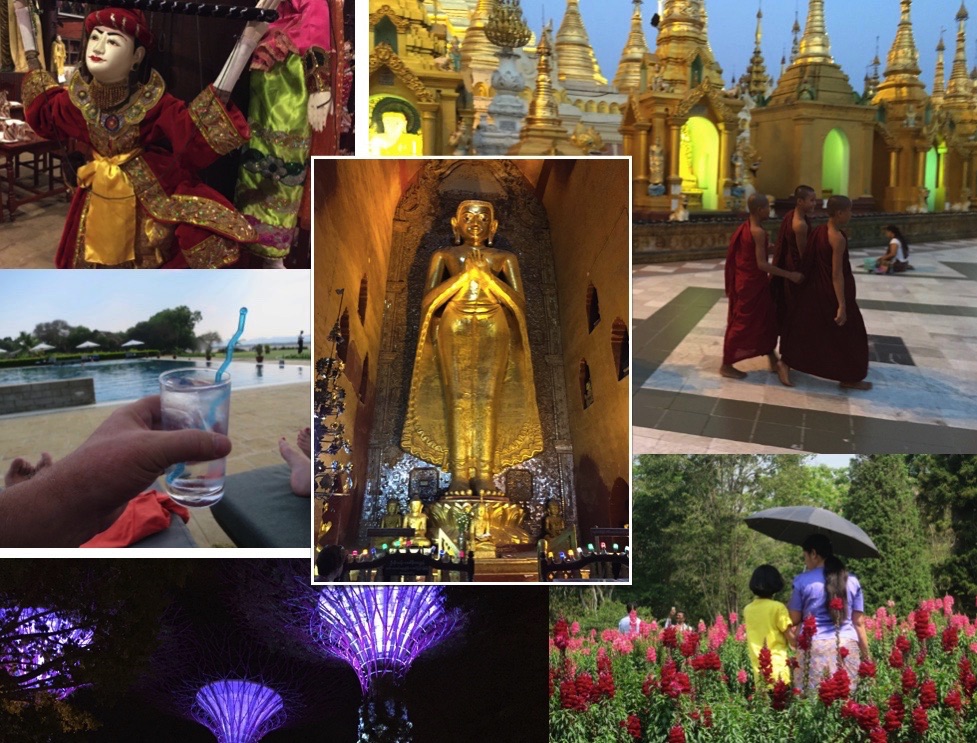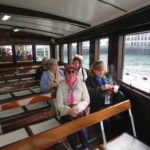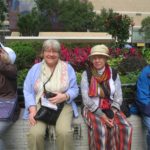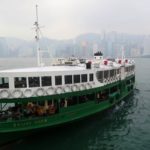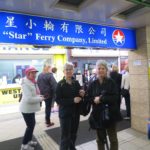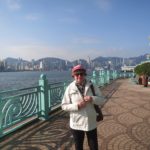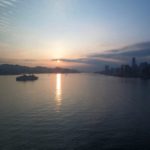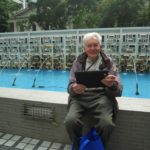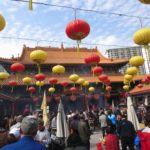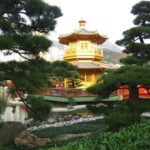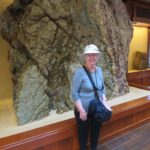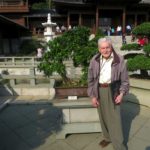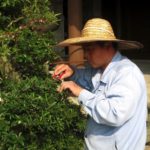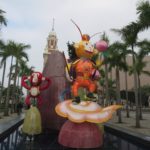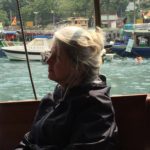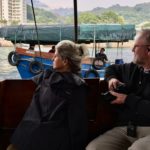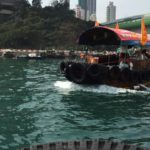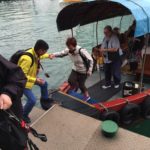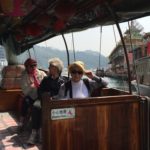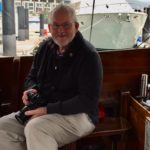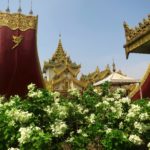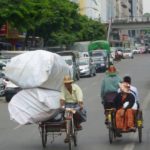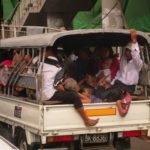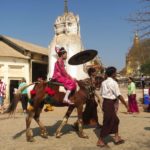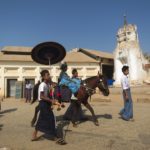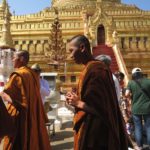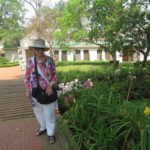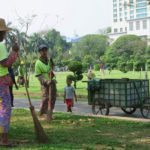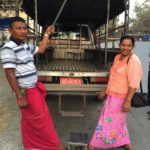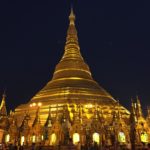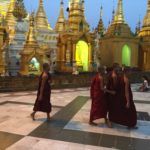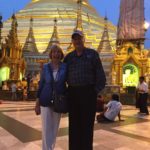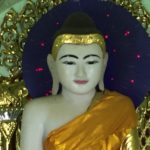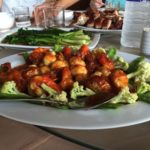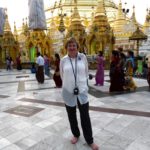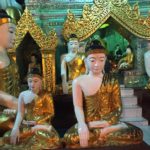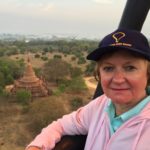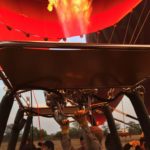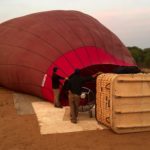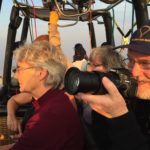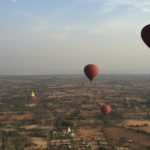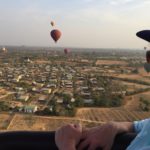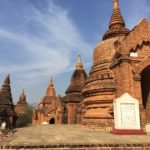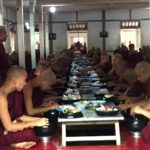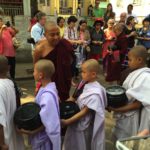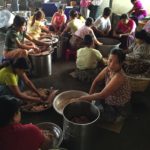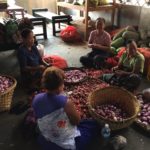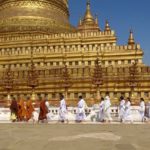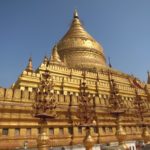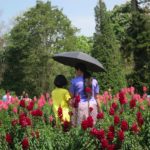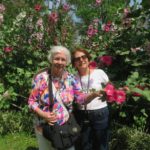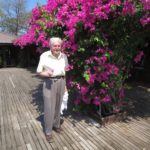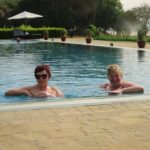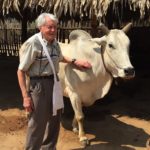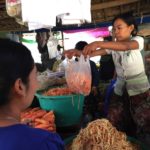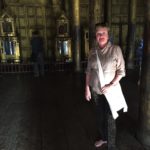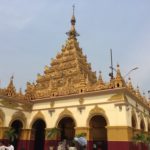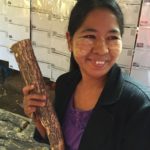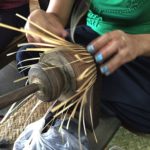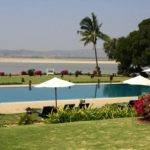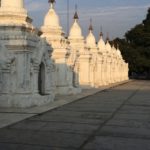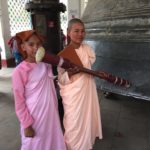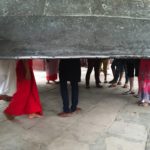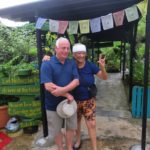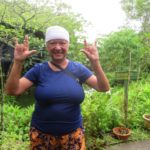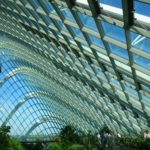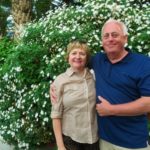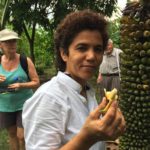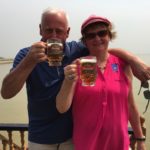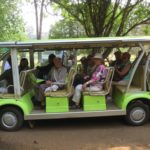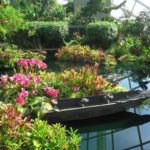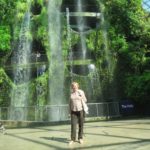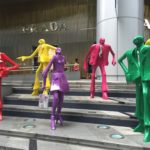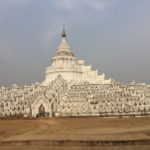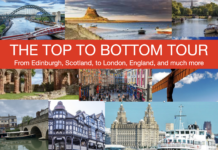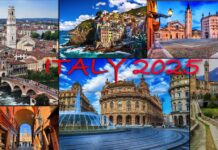On Feb 25, 2016, I was in Hong Kong with a group of people heading off on a tour to Myanmar (formerly Burma) and then to Singapore before returning to Vancouver via a last-days shopping trip in Hong Kong.
In Hong Kong, our hotel was on the Kowloon side, looking over to the downtown core.

We started with a casual stroll along the lovely Kowloon promenade planted with rows of plumeria trees, Madagascar almonds, foxtail palms and Hong Kong orchid trees, many of which were in full bloom.
This was February, remember, but we were delighted to find cordylines adding dramatic splashes of red and purple foliage to the lush purple hedges of loropetalum. There were also camellias in bloom as well as summer flowers – petunias, pelargoniums and cosmos. With a temperature of 16 C, it felt much warmer, like a perfect summer’s day.
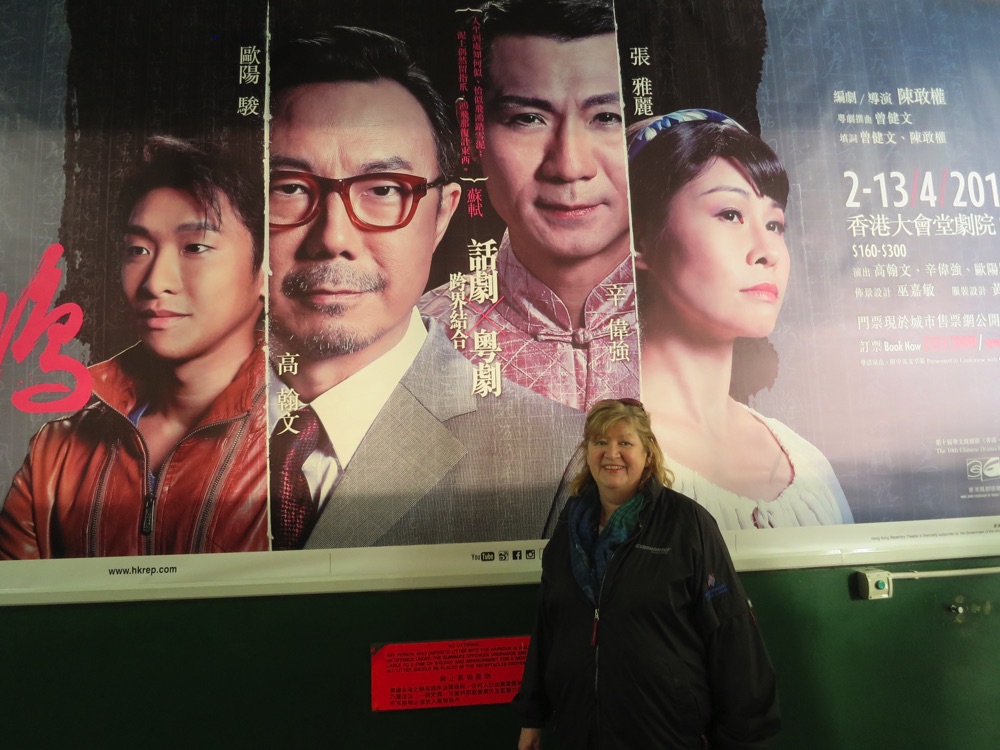
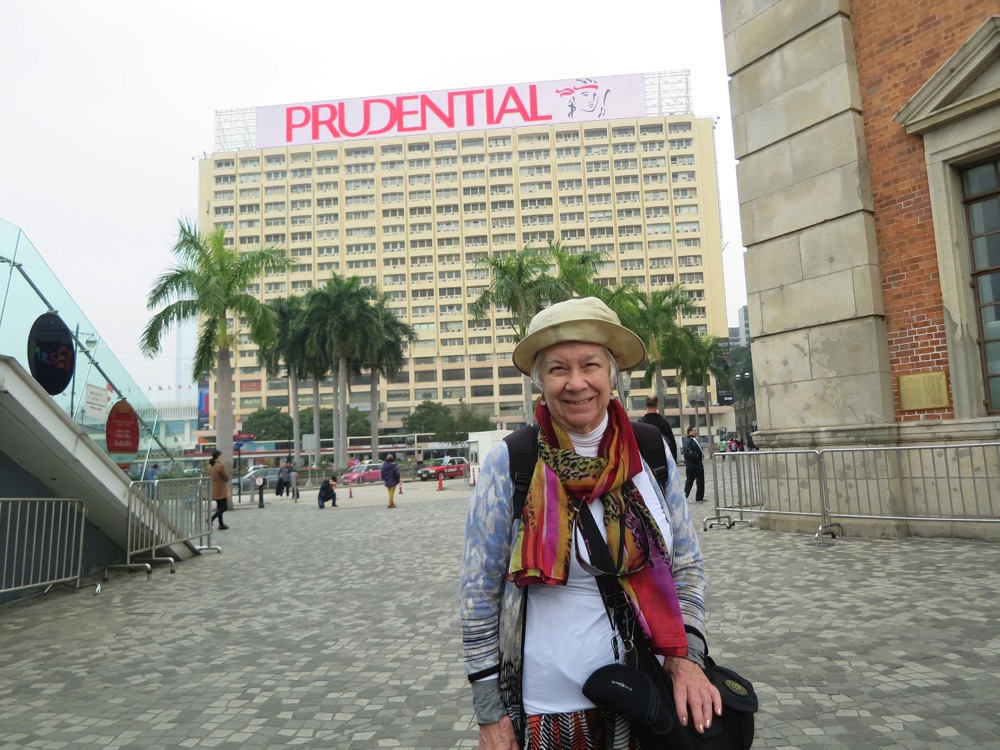
I popped into the historic Peninsula Hotel, the classic old-time hotel that still shuttles guests around in dark green Rolls Royce Phantoms. I counted 14 of them outside the hotel.
We took the Star ferry and went up The Peak to see the views over the city.
Next, we went to Aberdeen Harbour where we toured the waterfront and saw lots of “junks” and we went for lunch at the Jumbo Kingdom Floating Restaurant. From there, we spent time at a local market before returning to the hotel.
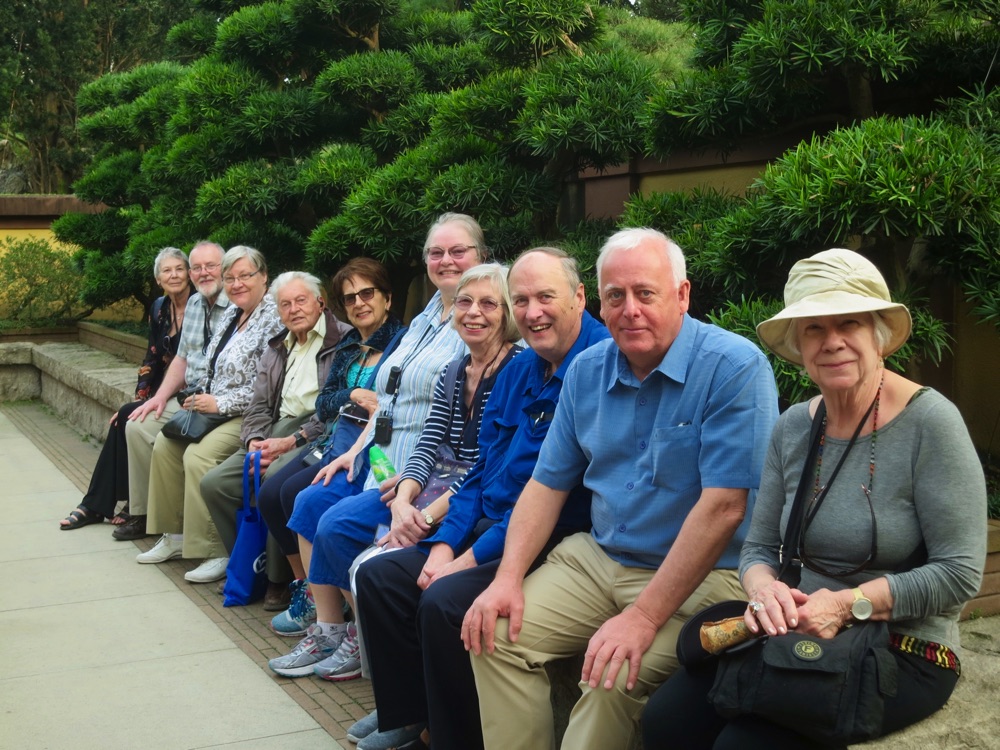
Next day, we went to Wong Tai Sin temple, famous for the number of prayers that miraculously get answered. Many incense sticks were being burned and the air was thick with smoke.
From the temple, we next visited the Chi Li Nunnery, connected to the Nan Lian Garden, in the Diamond Hill district.
In the courtyard of the nunnery, we were impressed by a superb show of penjing – the Chinese equivalent of bonsai. We saw gardeners in their blue work clothes tenderly clipping these living masterpieces, featuring Indian laurel fig, Buddhist pine, Chinese banyan, orange jasmine and more common plants like Thuja orientalis, pyracantha and Chinese boxwood.
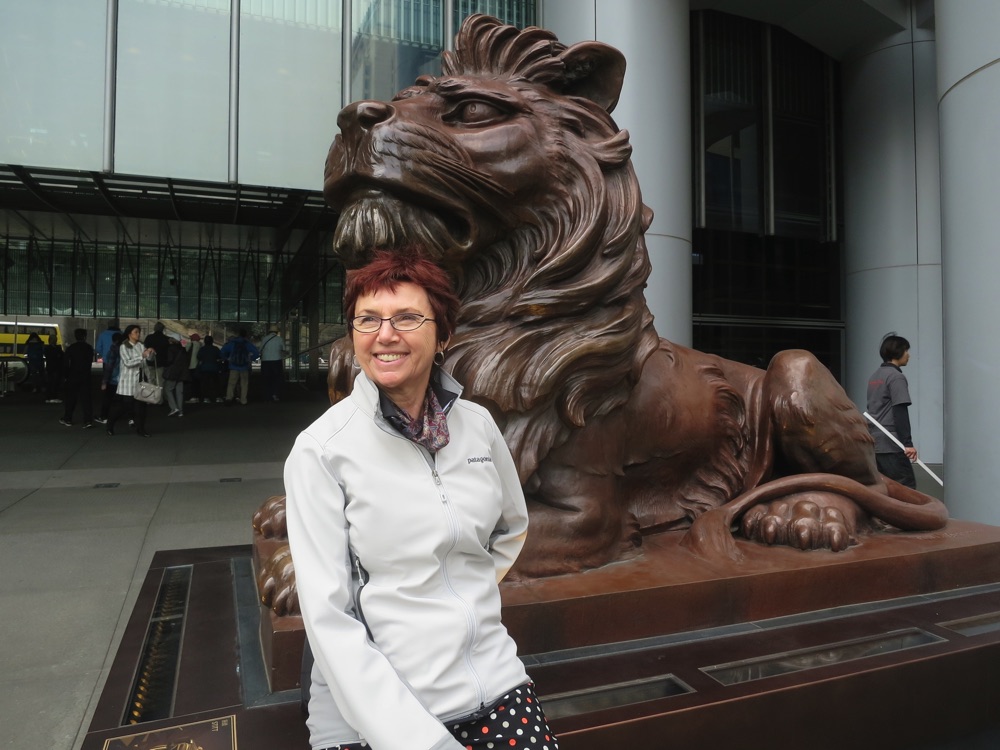
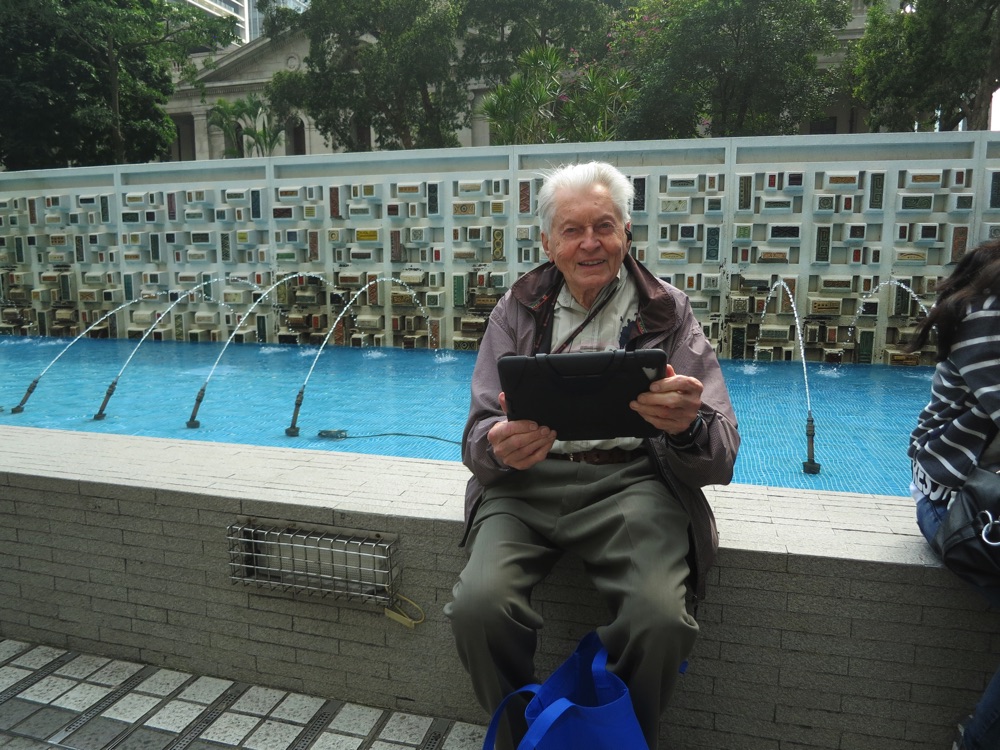
In the Nan Lian garden, we found a recreated Tang-style garden with large number of sculptured Buddhist pines (Podocarpus) immaculately clipped into sculptural shapes.
At the centre of this garden we found a golden octagonal Ting pavilion called the Pavilion of Absolute Perfection. Moving on we came to a koi filled pond with an elegant Lunar Reflection Terrace for viewing the koi and for seeing the moon reflected on the water.
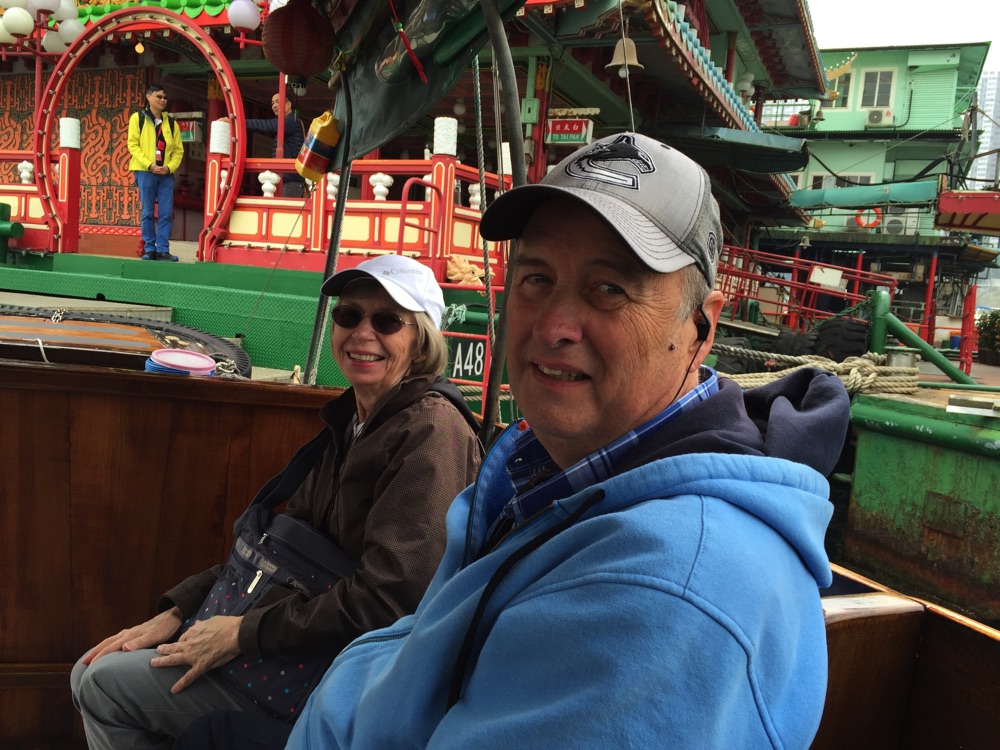
From Hong Kong, we flew to Yangon, Myanmar and checked into the Shangri-La hotel.
The next day we went see temples and other sights of Yangon, formerly Rangoon.
We started by walking in the Victoria Gardens, now called the Maha Bandoola Garden, in the heart of downtown Yangon. This park with its fountains and white obelisk is popular with local people for family picnics and for doing tai chi.
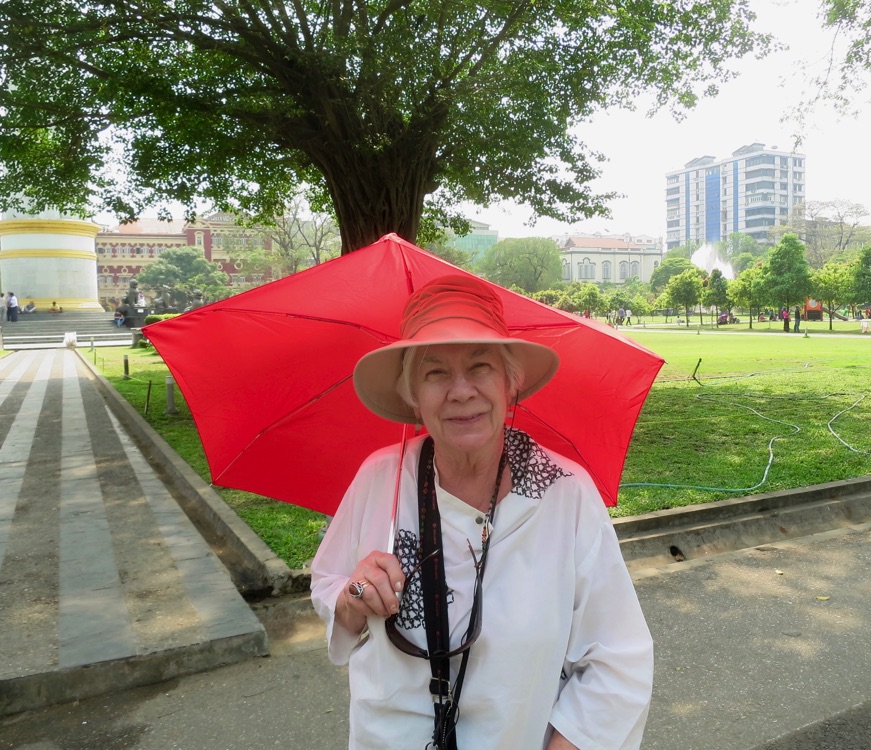
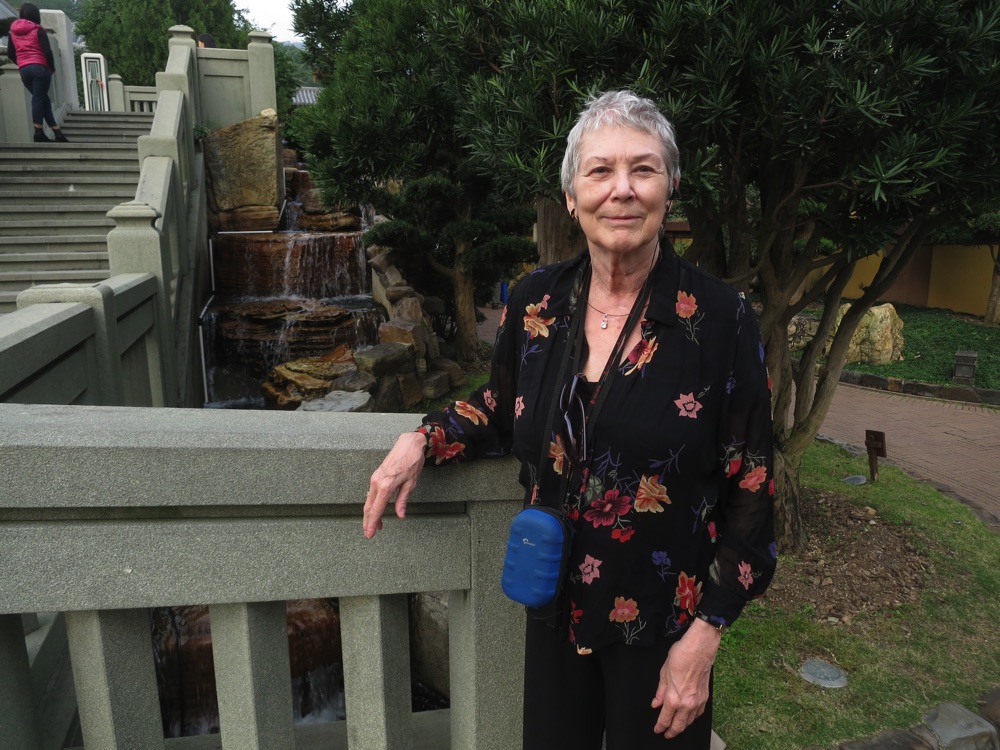
We noticed rules about how to behave in the garden: chewing quid of betel and spitting it out was prohibited and action would be taken against anyone caught “picking flowers and damaging plants.”
From here, we went to Kandawagyi park to see the views over a large man-made lake and the famous Shwedagon Pagoda, Buddhist shrine, the most well-known landmark in Myanmar, which we would visit later in the day at sunset.
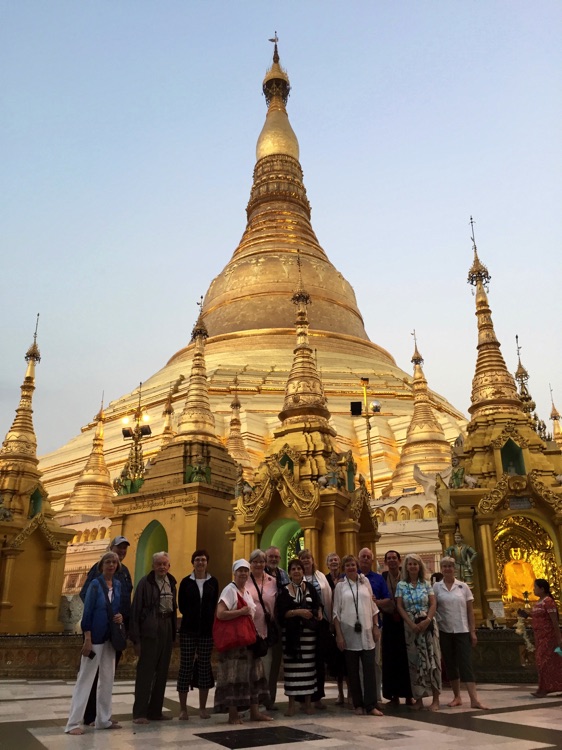
At Kandawagyi, we noticed for the first time men wearing the traditional longyi – a skirt-like sheet of cloth that is usually about 2 m long by about 80 centimetres wide and wraps around the waist very quickly.
In the evening, we made our visit to the Shwedagon Pagoda, said to be at least 2,600 years old and located on the 99 metre high (325 feet) Singuttara Hill.
Everyone was asked to remove their shoes and walk barefoot around the shrine as a sign of respect. The cluster of temples and shrines around the main golden stupa made a powerful impression.
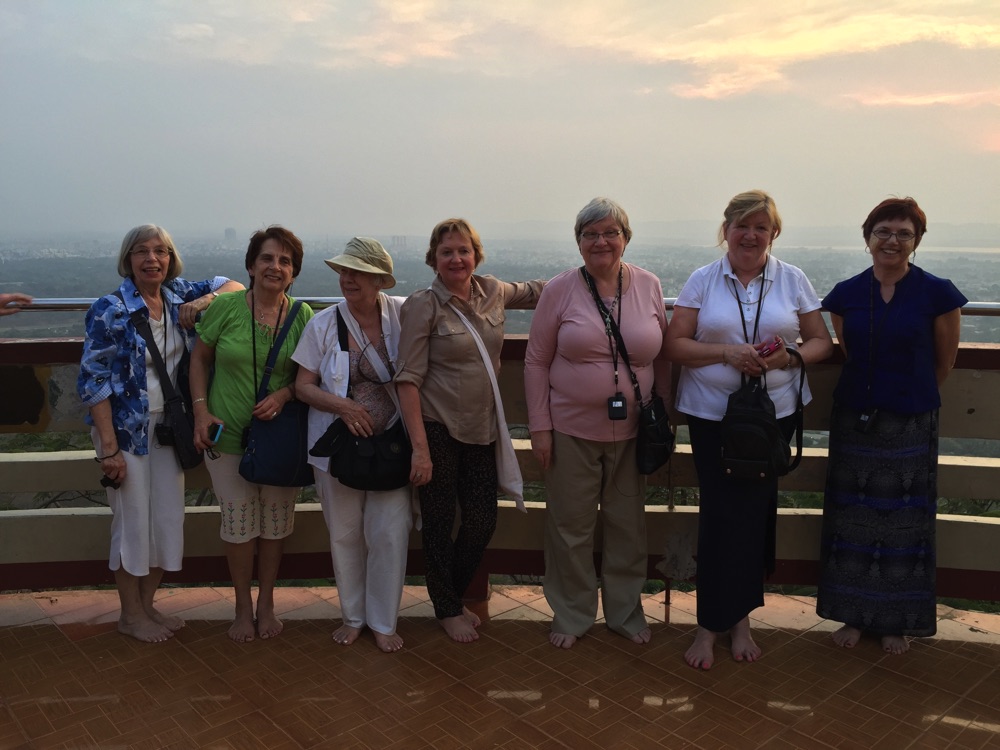
It was easy to get wooed into a feeling of peace and goodwill when we were surrounded by the smiling Buddha faces, the smell of burning incense, worshippers going through spiritual rituals and groups of monks in purple robes gliding by.
The impact of the stupa was heightened as the sun set and the last rays of sunlight seemed to turn the structure into liquid light.
We all agreed this was ones of the most impressive spectacles we had ever seen.
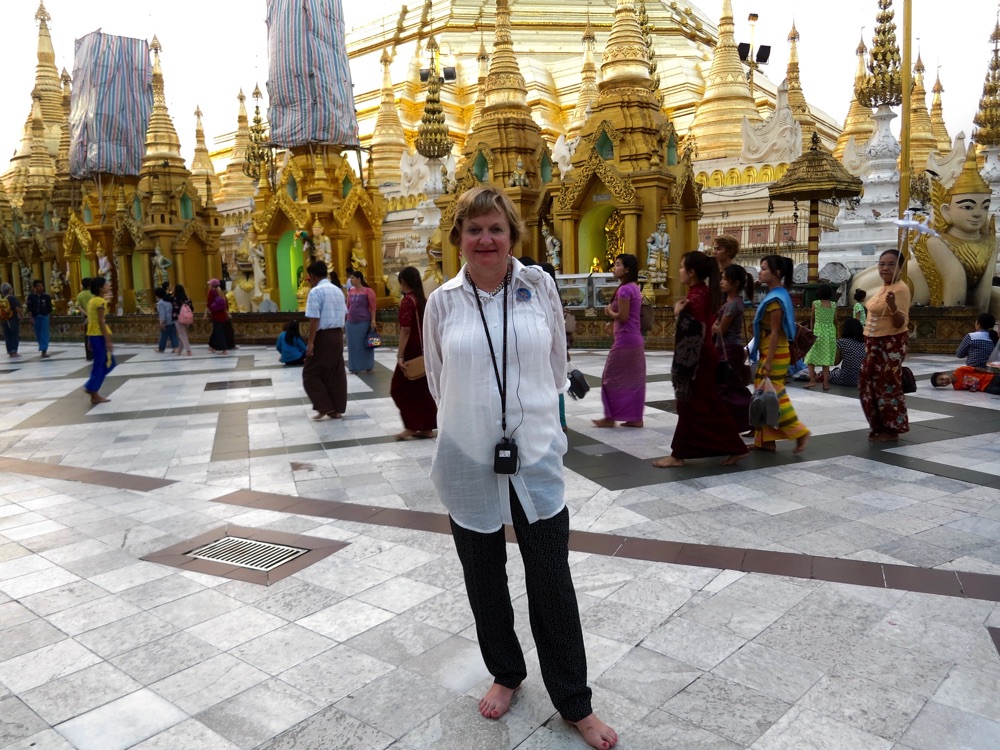
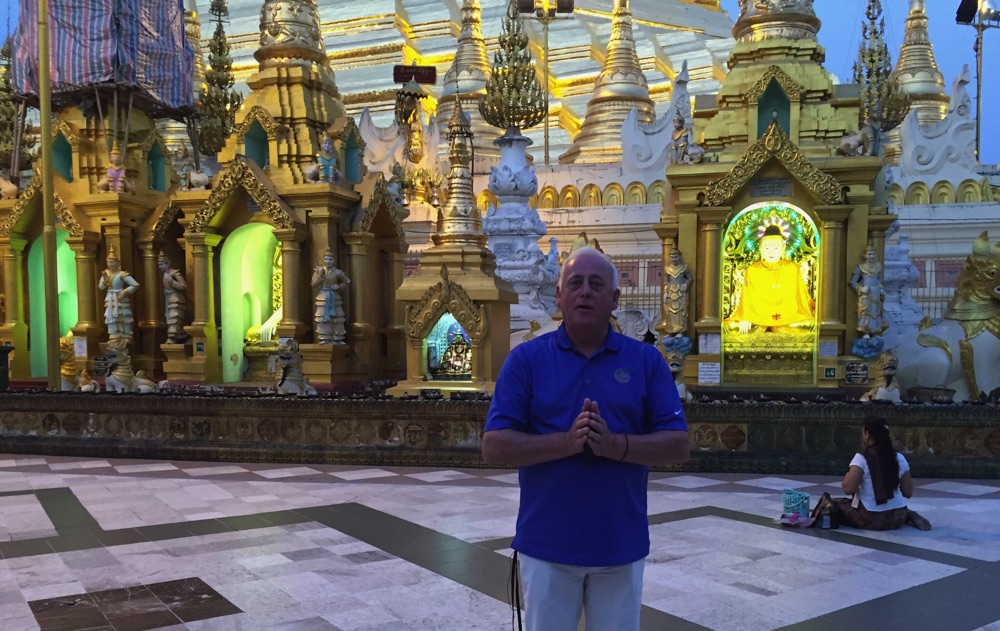
The next day, we flew from Yangon to Bagan to see more of the Myanmar’s archeological and architectural wonders. We also had plans to take a balloon ride.
We stayed on a lovely resort hotel on the banks of the Irrawaddy River.
We toured the area and visited more historic stupas and also did our hot-air balloon ride.

From Bagan, we took a short flight to Mandalay and immediately noticed on landing that the landscape was much greener and the soil more fertile with fields full of fruit trees and peanut crops.
Our first stop was the famous U Bein Bridge – a 1.2 kilometre rustic teak bridge across Taungthaman Lake near Amarapura.
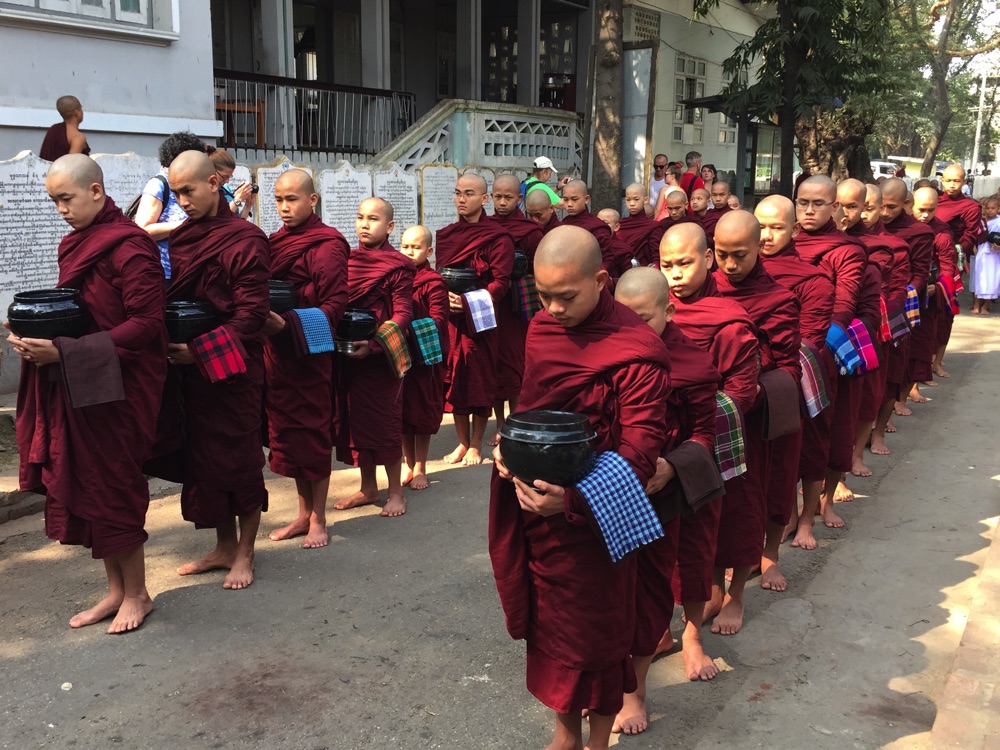
The funny thing was that our group had no fear riding 2,000 feet high in the balloons over Bagan but were nervous about walking on this old bridge which is held up by more than 1,000 pillars but has no side-barriers or handrails. Apparently the wood was reclaimed and recycled from a royal palace.
Next, we stopped at the largest monastery in Mandalay – the Mahar Gandar Yone – to watch the 1,200 monks in their purple robes line up for their morning meal. This was a formal, ritualistic ceremony with the monks carrying their donating dishes and queueing up to enter the dining rooms.
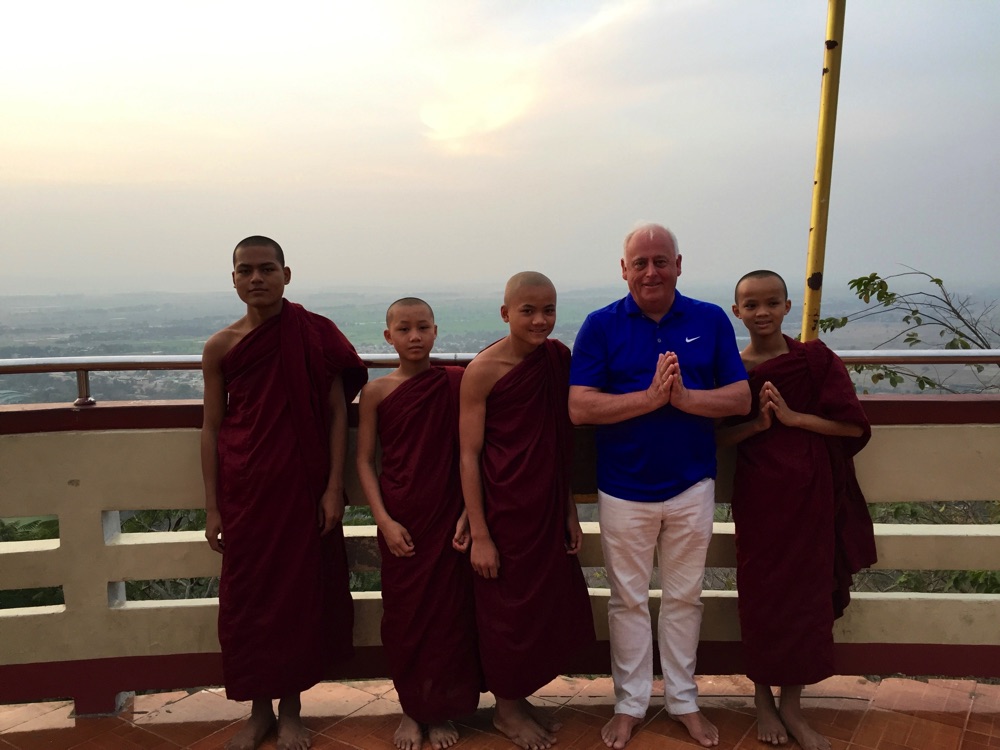
We were allowed to watch the monks sitting down and enjoying their meal together while their donators – the villagers who support them – had lunch in a separate hall.
We also got to step inside the monastery kitchen and watch food being prepared for the next day’s meals. This included peeling giant baskets of onions for soup and slicing fish and stirring enormous vats of rice.
A short ride to another part of town and we were at the Mahamuni Buddha Temple, regarded as the most important and sacred Buddhist temple site in Mandalay and northern Myanmar.
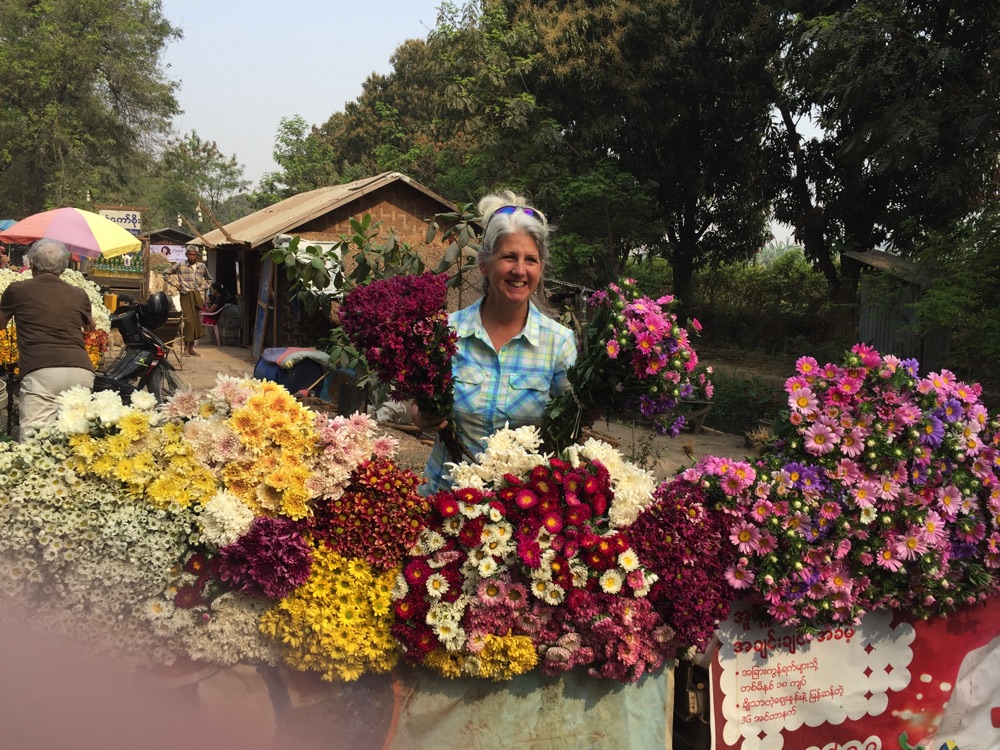
The golden Buddha image in this temple is considered one of the most important since it dates back to the time of the buddha and is thought to have a true likeness.
Apparently, it is the only icon that has provoked a fight between rival Buddhist factions and is also said to have been part of the cause for the first Anglo-Burmese conflict.
Only men are allowed to go into the inner sanctum to get close to the Buddha statue which is continually being dabbed with more and more gold leaf.
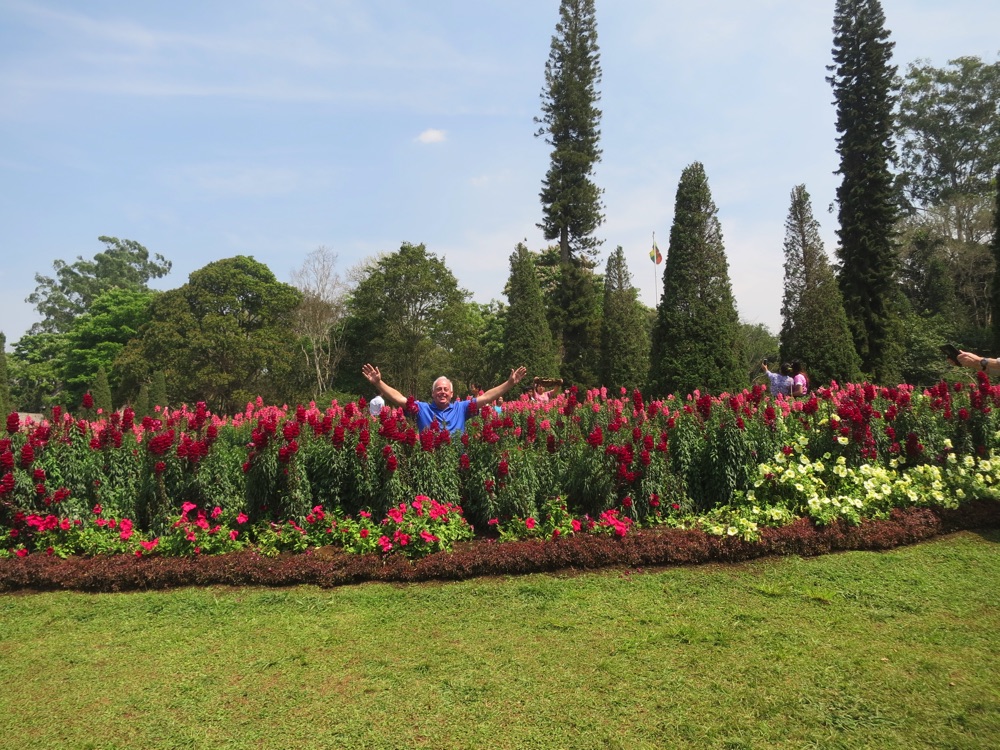
We visited other holy sites, including the Gold Palace Monastery which is made entirely of carved teak and dates back to the turn of the last century and we wandered around the famous Kuthodaw Pagoda site and saw the “World’s Biggest Book” – a place with 729 individual white temples that each contain the teachings of Buddha inscribed on large slabs of marble.
In the evening we went to watch the sunset from the hilltop over Mandalay. To reach the top of the hill – 240 m high – we had to jump into smaller trucks and ride to the top, a wild, bouncy, hair-raising trip that involved swinging around countless switchbacks.

At the top, there was another shrine where we got to chat with some very friendly monks, all of whom told me how happy they were to be living the life they have at the monastery,
Next day, we went to Pyin Oo Lwin to visit the National Kandawgyi Botanical Garden, loosely modelled after Kew Gardens in London and built by Brits, Alex Roger with the help of gardening hobbyist Lady Charlotte Wheeler-Cuffe.
We found very well laid out orchid gardens and an arboretum with some spectacular trees, including enormous banyan and eucalyptus trees as well as gorgeous bamboo groves and sweeping lake views. The garden is also home to takin (Thar-Min). We were allowed to feed them bananas.
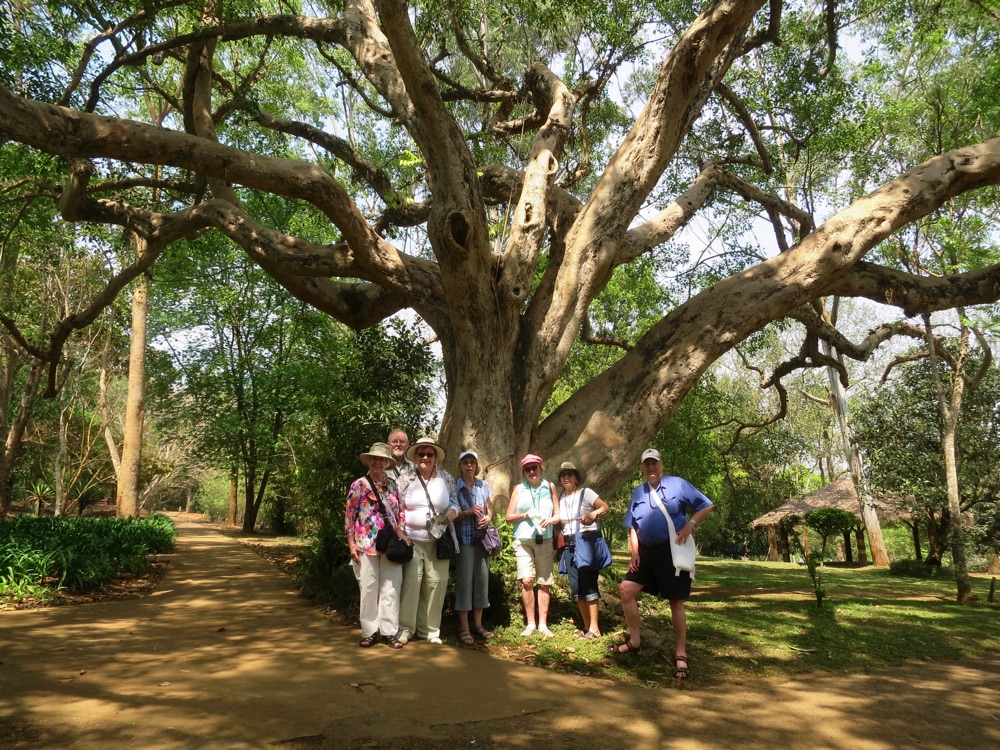
Although only 42 miles outside of Mandalay the bus ride took us more than two hours because of the narrowness of the road and the volume of truck traffic headed for the China border.
All along the side of the road were vegetable and fruit stands and flowers stalls. On our way, we also passed teak, banana and mulberry plantations.
Motorcycles were darting in and out of traffic everywhere with women riding side saddle-style on the back, sometimes holding babies or young children on their lap.
We also saw some preparations and processions involving taking young boys to the Buddhist monastery to be inducted as novices.

Most lasting impression from our day in the country is that the people of Myanmar are not only gentle and perpetually smiling and polite but also very young and educated and willing to take on whatever challenges come along.
For our last day in Mandalay, we started out by taking a cruise about 11 km down the Irrawaddy River to the Mingun Pahtodawgyi, a massive but unfinished stupa monument, a huge construction project started by King Bodawpaya in 1790 but was deliberately left unfinished.
When we arrived, we found children swimming in the river and lots of women and girls on the banks of the river selling souvenir items.
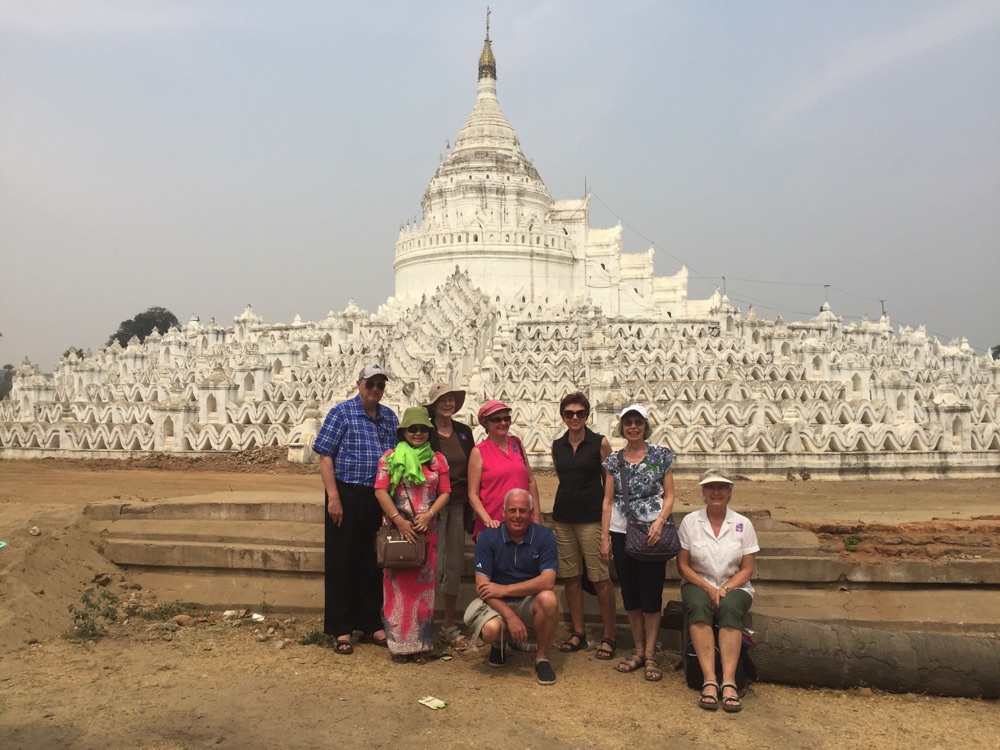
We walked up to the monument and then on to see the giant Mingun Bell, ones of the heaviest functioning bells in the world, weighing a massive 199,999 pounds.
A little further on, we came to the Hsinbyume Pagoda, a pure white temple with seven sets of waves and seven sets of “mountain ranges” supposedly symbolizing the mythological mountain of Mount Meru. This is a work dedicated to a princess who died in childbirth near the site in 1812.
From Mandalay, we next flew to Singapore, where we checked into the Shangri-La Hotel.
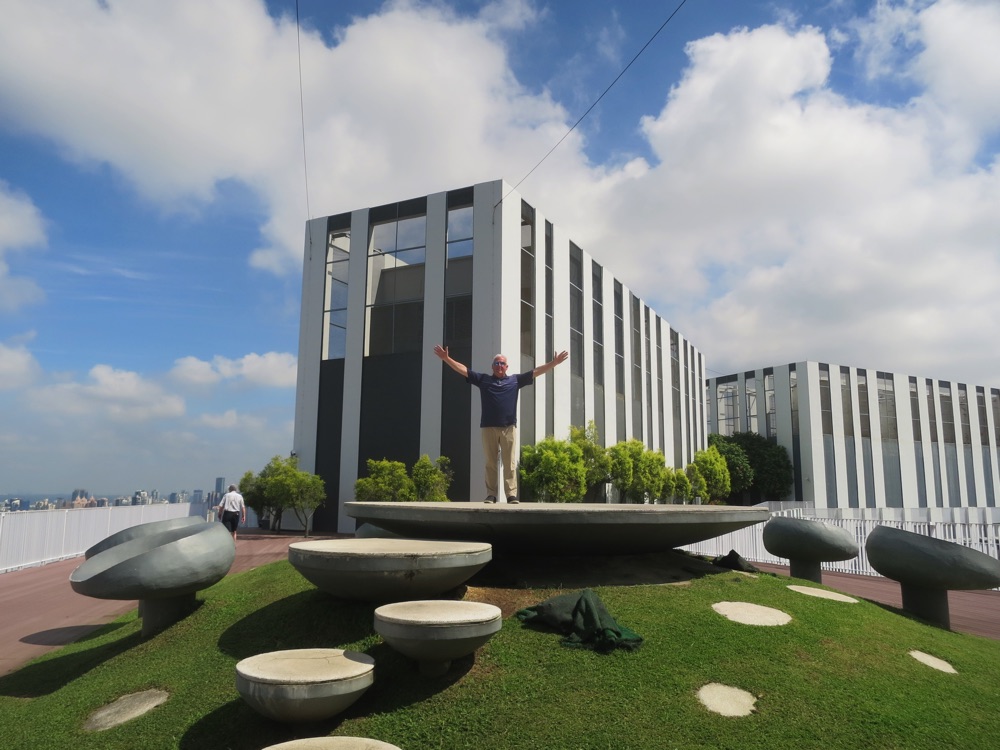
After visiting the rooftop of the Pinnacle complex downtown from where we were able to get a 360 degree view of the city, we shopped on Orchard Road, discovering the multiple levels of subterranean malls, all of which were perfectly air-conditioned.
Later, we visited the Kranji War Memorial in northern Singapore and learned a lot about the occupation of Singapore by the Japanese in the Second World War and about the treatment of British soldiers.
Later, we journeyed down to the $1 billon Gardens by the Bay project to see the “supertrees” up close and to visit the two bio-domes – the Cloud Dome and the Flower Dome.
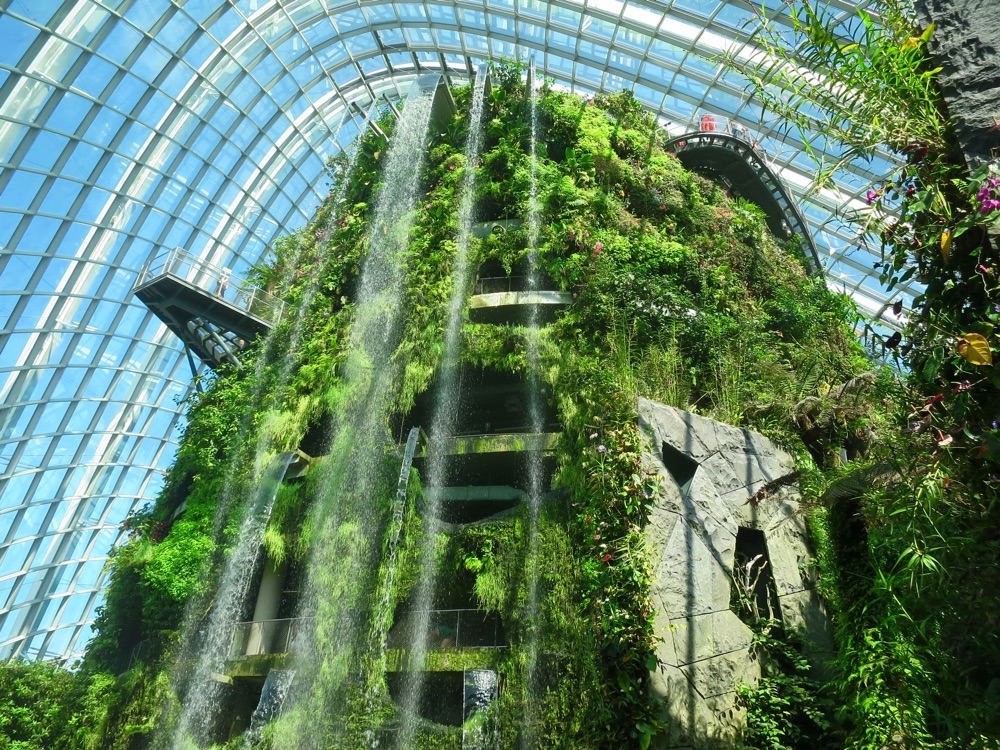
In the Cloud Dome, we were immediately confronted by a huge vertical garden-tower with thundering cascades of water pouring down from five separate outlets. This “mountain” of greenery contained a wide range of exotic flowering plants, including many kinds of orchids and begonias as well as colourful foliage plants.
From the Cloud Dome, we moved to the Flower Dome where we found amazing displays of weird and wonderful plants from all over the world – baobabs from Africa and floss silk trees (Ceiba chodatii) from South Africa plus all sorts of unusual and fascinating plants from Australia.
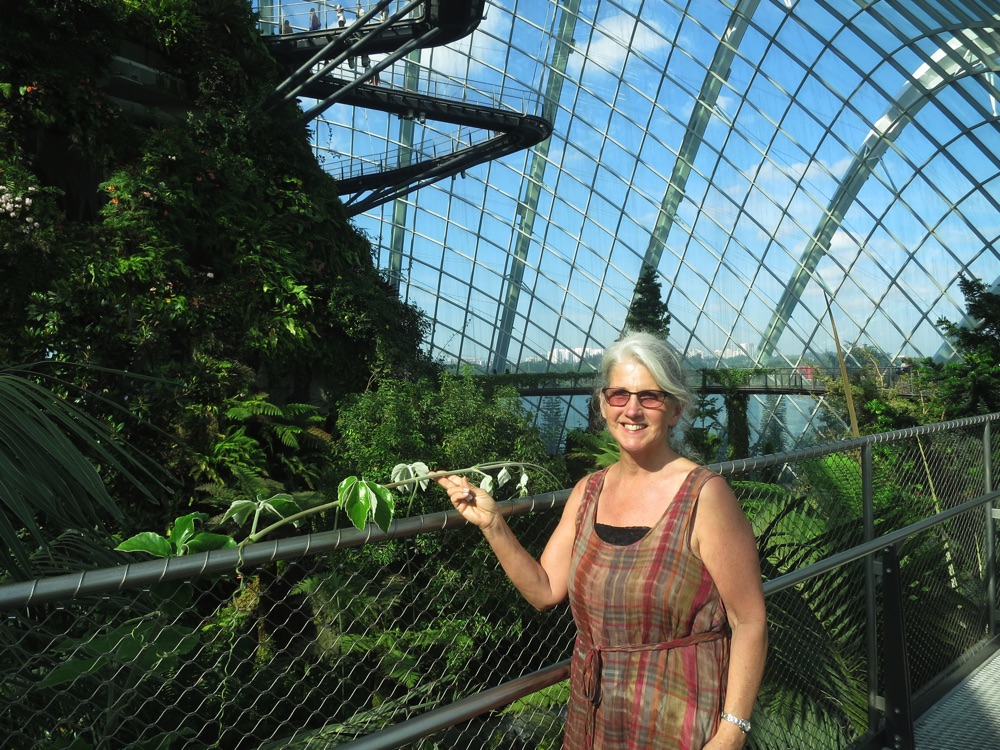
From Singapore, we returned to Hong Kong where we visited the Ladies Market in Kowloon for last minute shopping before heading for the airport to return to Vancouver.
swhysall@hotmail.com
